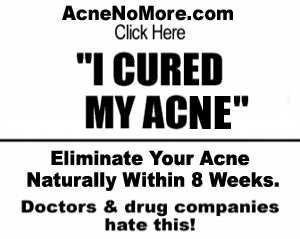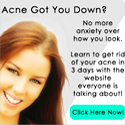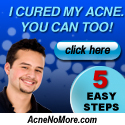Some Helpful Acne Tips
Some Helpful Acne Tips
What is Acne? Acne, most commonly known as pimples, is the worst nightmare for those too unfortunate to suffer. It is the most common skin disease today. In United States alone, nearly 60 million people are infected with acne, where 85 per cent of teenagers suffer from it. Acne is a disorder resulting from the action of hormones on the skin’s oil glands (sebaceous glands), which leads to plugged pores and outbreaks of lesions commonly called pimples or zits. Acne lesions usually occur on the face, neck, back, chest, and shoulders. Acne can involve mild to severe outbreaks of pimples and cysts on the face and sometimes on the back, shoulders and chest. Here are several acne terms that can help you better understand acne. Comedos are simply a plugged and enlarged hair follicle. When a comedo is open, it is usually called a blackhead. When it is closed or deep into the skin, it is usually called whitehead. The whitehead differs in color from the blackhead because the opening of the plugged sebaceous follicle to the skin’s surface is closed or very narrow, in contrast to the distended follicular opening of the blackhead. Neither blackheads nor whiteheads should be squeezed or picked open, unless extracted by a dermatologist under sterile conditions. Tissue injured by squeezing or picking can become infected by staphylococci, streptococci and other skin bacteria. Cysts are lumps under the skin that have pus and other tissue in them, and they can be red, swollen and sore – but they do not come to a head like pimples do. Cysts can cause scarring and blotchy, uneven skin colour.
Acne Tips It is very important that teenagers and their parents know that the care that they give to their skin cannot stop pimples from coming completely, and that if the acne is very bad, skin care is not likely to make any difference. There is also a lot of mis-information about skin care. • Washing the face should only be done once or twice a day, with a mild soap. The skin should not be scrubbed. • Washing hair: the forehead can be oilier than other parts of the face, and have more pimples. The hair just above the forehead is also often oily. Oily hair probably does not cause acne on the forehead to be worse. Washing the hair often (such as daily) can make the hair look better, but may have no effect on the acne. If their forehead has a lot of acne, teenagers will want to cover it with their hair. This probably will not make the acne worse, and might be helpful in improving the way they feel about their face. • Pimples should not be squeezed, as this can damage the lining of the pore and the sebum and bacteria can get into the skin around the pimple, causing more inflammation (redness, swelling and pus). However most teenagers cannot resist trying to squeeze out pus or a blackhead. If they have to, make sure they know that they should have clean hands, and only squeeze very gently. If the pus or blackhead does not come out easily, it is not ready to come out. • Exposing the face to a little sunlight, not enough to cause any skin damage, may help a little. • Avoiding cosmetics and sunscreens which are oil based might be worth trying. • There are many products for sale ‘over the counter’ at pharmacies, or in supermarkets, which are claimed to reduce or get rid of acne. Some of these may help. Many of them work by increasing the speed of production of cells lining the ducts and cells of the skin of the face. This can unblock the pores, or make them less likely to block. • Cheap products may be as helpful as more expensive ones. Some make the skin more sensitive to sunlight, so sun screen should also be used. If the product causes the skin to become very red or sore, stop using the product.
Keith Wolfe





